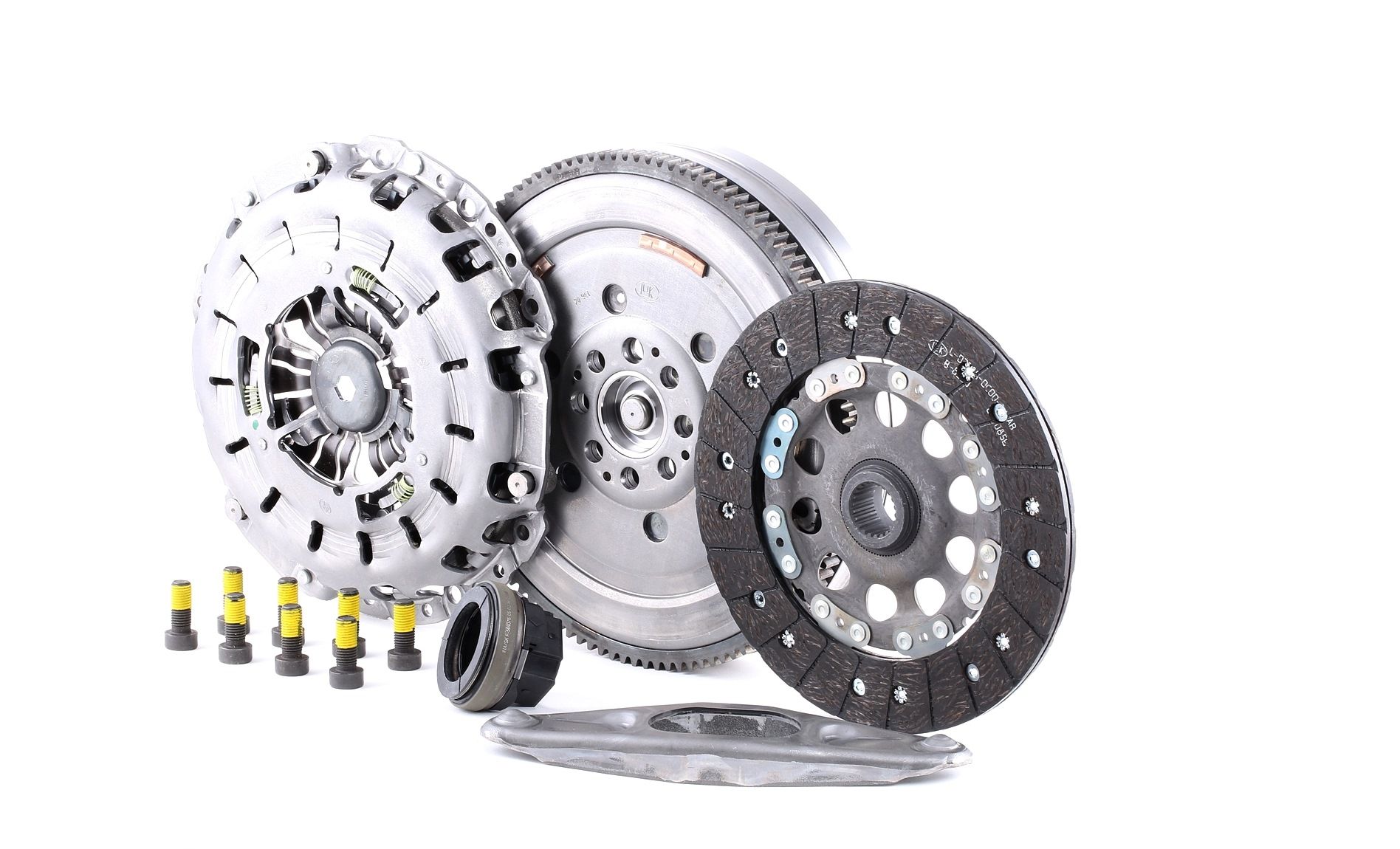Table of Contents
High clutch biting point: adjustment, meaning and symptoms
What a high clutch biting point means in a car, how to adjust it, and the symptoms of a worn clutch.
High clutch biting point in a car: how bad it is and how to adjust it
If the biting point of your clutch is climbing higher and higher, it could be an indicator of a worn or failing clutch mechanism. In this case, you may need to replace certain clutch components or make adjustments to the pedal, plates or cable. Check out the article below to learn more about exactly what causes a high biting point on the clutch and how to fix the issue.


 LuK Clutch kit
with pilot bearing, with clutch release bearing, with release fork, with flywheel, with screw set, Requires special tools for mounting, with automatic adjustment
LuK Clutch kit
with pilot bearing, with clutch release bearing, with release fork, with flywheel, with screw set, Requires special tools for mounting, with automatic adjustment

 LuK Clutch kit
with central slave cylinder, with flywheel, with screw set, with automatic adjustment
LuK Clutch kit
with central slave cylinder, with flywheel, with screw set, with automatic adjustment
What is the biting point in a car?
In simple terms, the clutch biting point is the point at which the mechanism starts to engage as the metal plates move towards each other to connect the engine to the transmission. This allows you to change gear and transfer power to the wheels without stalling the engine. If the engagement point is closer to the top of the pedal’s range of travel, it is likely too high.

You should be able to feel the sensation of the clutch engaging when you lift your foot off the clutch pedal. Try to avoid wearing shoes with heavy or thick soles for driving as it may make it harder for you to detect this with your feet.
Why is my biting point so high?
A high clutch biting point is often a sign that the components, such as the car clutch plate and pressure plate, are worn and near the end of their service life. Other signs of a bad clutch include slipping gears or difficulty shifting between gears, a spongy clutch pedal, a burning smell, and high RPM coupled with poor acceleration.
In some cases, it is caused due to air bubbles in the hydraulic system. However, the mechanism could just need adjusting, particularly if the vehicle or clutch is relatively new. It may be possible to adjust the biting point with a few small changes.
Can you adjust a high hydraulic clutch biting point?
Normally, the hydraulic system will adjust this on its own by compensating for wear. However, you may adjust the biting point if it has been set incorrectly. For example, you can adjust the length of the pushrod that connects the clutch pedal to the master cylinder. This will change the position of the pedal and thus the engagement point.
 VALEO Clutch kit
with dual-mass flywheel, with flywheel screws, without lock screw set, with clutch release bearing, 235mm
VALEO Clutch kit
with dual-mass flywheel, with flywheel screws, without lock screw set, with clutch release bearing, 235mm
 SACHS Clutch kit
with clutch pressure plate, with dual-mass flywheel, with flywheel screws, with pressure plate screws, with clutch disc, with clutch release bearing, 228mm
SACHS Clutch kit
with clutch pressure plate, with dual-mass flywheel, with flywheel screws, with pressure plate screws, with clutch disc, with clutch release bearing, 228mm
 SACHS Clutch kit
190mm
SACHS Clutch kit
190mm
 VALEO Clutch kit
with clutch release bearing, 208mm, 208mm
VALEO Clutch kit
with clutch release bearing, 208mm, 208mm

Make sure to check the fluid level in the car brake fluid reservoir to ensure there are no leaks and, if required, bleed the system to remove any air bubbles preventing the mechanism from engaging properly.

FAQ
What does a high biting point mean?
If the biting point is high, it usually means that the clutch is worn or needs to be readjusted to ensure smooth engagement. Over time, the friction material on the metal plates is worn down, making it harder for them to connect and transfer engine power.
Is a high biting point bad?
It’s nothing to panic about right away, but it could mean that the clutch needs a replacement. Make sure to inspect and fix or adjust the parts in good time to avoid sudden clutch failure further down the line. The biting point should be set at a comfortable height for the driver to ensure consistency and prevent discomfort or fatigue.
Top products related to this topic:











